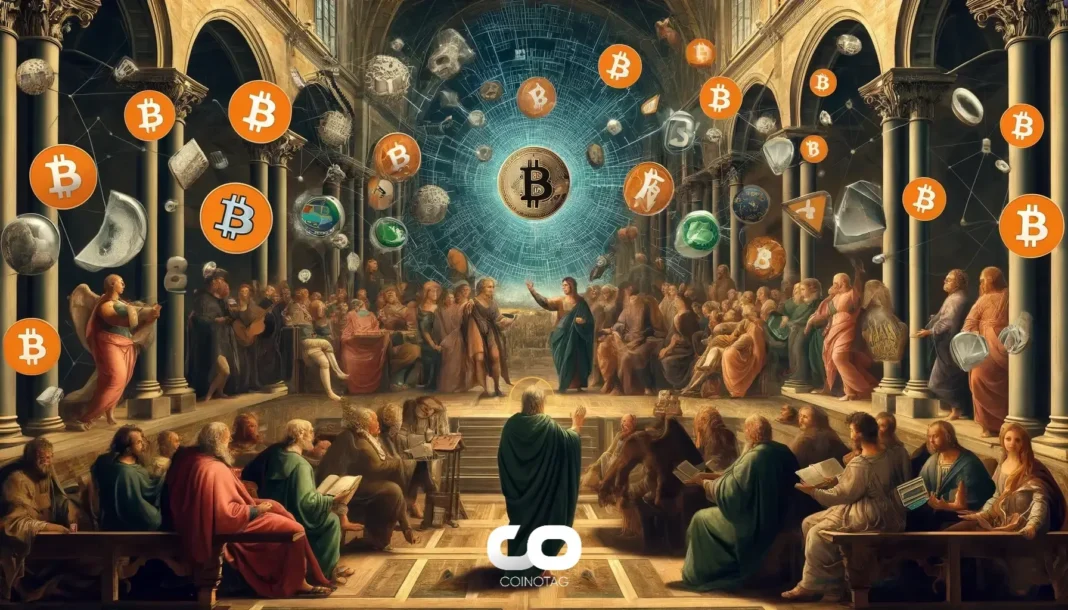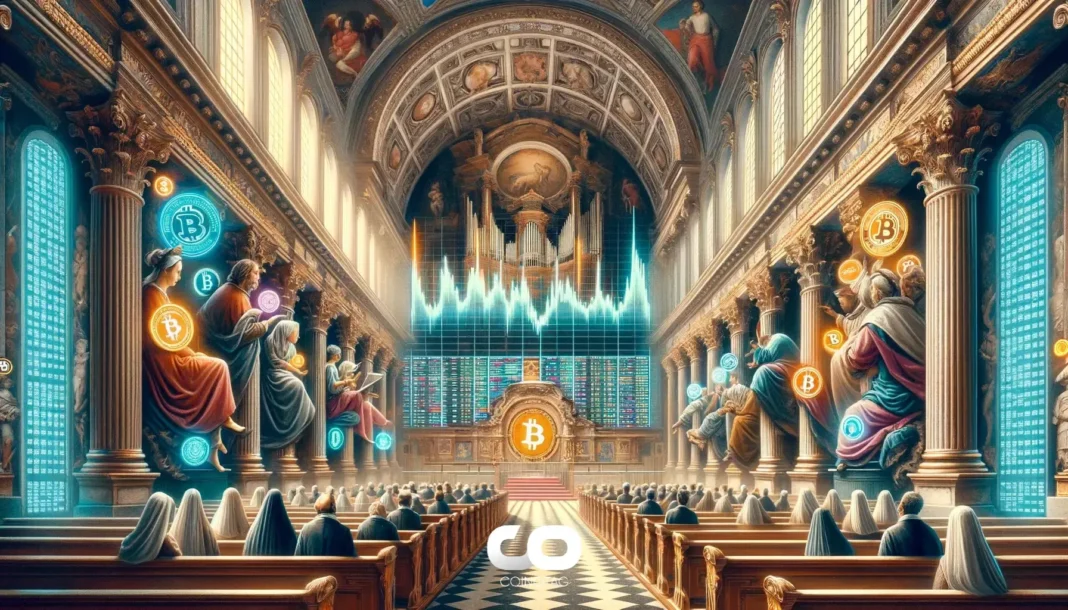| COINOTAG recommends • Exchange signup |
| 💹 Trade with pro tools |
| Fast execution, robust charts, clean risk controls. |
| 👉 Open account → |
| COINOTAG recommends • Exchange signup |
| 🚀 Smooth orders, clear control |
| Advanced order types and market depth in one view. |
| 👉 Create account → |
| COINOTAG recommends • Exchange signup |
| 📈 Clarity in volatile markets |
| Plan entries & exits, manage positions with discipline. |
| 👉 Sign up → |
| COINOTAG recommends • Exchange signup |
| ⚡ Speed, depth, reliability |
| Execute confidently when timing matters. |
| 👉 Open account → |
| COINOTAG recommends • Exchange signup |
| 🧭 A focused workflow for traders |
| Alerts, watchlists, and a repeatable process. |
| 👉 Get started → |
| COINOTAG recommends • Exchange signup |
| ✅ Data‑driven decisions |
| Focus on process—not noise. |
| 👉 Sign up → |
- Hackers have begun targeting the USDT recharge system on the TON blockchain, aiming to defraud crypto exchanges with falsified deposits.
- This fraudulent activity was identified by the Dilation Effect on-chain monitoring system, which discovered a malicious TON address.
- The hackers are utilizing a counterfeit USDT token contract replicating the legitimate USDT metadata for deceptive recharge tests across various exchanges.
Discover how hackers exploit USDT on the TON blockchain to deceive exchanges with fake deposits. Learn about the threats and preventive measures.
Hackers Exploit USDT on TON Blockchain for Fraudulent Deposits
The Dilation Effect on-chain monitoring system has recently flagged fraudulent activities involving the USDT on the TON blockchain. Hackers have created a fake USDT token contract that mirrors the official USDT metadata, using it to perform deceptive recharge tests on multiple crypto exchanges. This has led to heightened concerns around the security of USDT transactions on the TON blockchain.
Implications for Crypto Exchanges
Crypto exchanges have been advised to enhance their monitoring and verification processes for large TON chain token deposits. Hackers have been testing the system with small amounts to identify and exploit vulnerabilities in exchange deposit protocols. This methodical approach indicates a significant threat, urging exchanges to be more vigilant and proactive in their security measures.
Security Concerns Amid Increased Adoption
Interestingly, this scam aligns with Binance’s recent integration of USDT on TON for deposit and withdrawal activities. The synchronization of these events raises concerns about the security of TON transactions, particularly since numerous exchanges have only recently begun supporting USDT deposits on this blockchain.
| COINOTAG recommends • Professional traders group |
| 💎 Join a professional trading community |
| Work with senior traders, research‑backed setups, and risk‑first frameworks. |
| 👉 Join the group → |
| COINOTAG recommends • Professional traders group |
| 📊 Transparent performance, real process |
| Spot strategies with documented months of triple‑digit runs during strong trends; futures plans use defined R:R and sizing. |
| 👉 Get access → |
| COINOTAG recommends • Professional traders group |
| 🧭 Research → Plan → Execute |
| Daily levels, watchlists, and post‑trade reviews to build consistency. |
| 👉 Join now → |
| COINOTAG recommends • Professional traders group |
| 🛡️ Risk comes first |
| Sizing methods, invalidation rules, and R‑multiples baked into every plan. |
| 👉 Start today → |
| COINOTAG recommends • Professional traders group |
| 🧠 Learn the “why” behind each trade |
| Live breakdowns, playbooks, and framework‑first education. |
| 👉 Join the group → |
| COINOTAG recommends • Professional traders group |
| 🚀 Insider • APEX • INNER CIRCLE |
| Choose the depth you need—tools, coaching, and member rooms. |
| 👉 Explore tiers → |
TON Blockchain’s Growing USDT Volume
The issuance of USDT on the TON blockchain was officially announced in April 2024. Since then, the volume of USDT transactions on TON has surged to nearly $600 million, positioning it as the sixth largest blockchain by USDT volume. TRON, Ethereum, and Solana continue to dominate the top three positions. However, this rapid growth also attracts malicious actors aiming to exploit the system’s relative newness and possible security gaps.
Conclusion
In light of the ongoing fraudulent activities targeting the USDT on the TON blockchain, it is imperative for both exchanges and users to stay alert and monitor for any irregular transactions. Strengthening security protocols and remaining vigilant can significantly mitigate the risks associated with these malicious endeavors.
| COINOTAG recommends • Exchange signup |
| 📈 Clear interface, precise orders |
| Sharp entries & exits with actionable alerts. |
| 👉 Create free account → |
| COINOTAG recommends • Exchange signup |
| 🧠 Smarter tools. Better decisions. |
| Depth analytics and risk features in one view. |
| 👉 Sign up → |
| COINOTAG recommends • Exchange signup |
| 🎯 Take control of entries & exits |
| Set alerts, define stops, execute consistently. |
| 👉 Open account → |
| COINOTAG recommends • Exchange signup |
| 🛠️ From idea to execution |
| Turn setups into plans with practical order types. |
| 👉 Join now → |
| COINOTAG recommends • Exchange signup |
| 📋 Trade your plan |
| Watchlists and routing that support focus. |
| 👉 Get started → |
| COINOTAG recommends • Exchange signup |
| 📊 Precision without the noise |
| Data‑first workflows for active traders. |
| 👉 Sign up → |
| COINOTAG recommends • Members‑only research |
| 📌 Curated setups, clearly explained |
| Entry, invalidation, targets, and R:R defined before execution. |
| 👉 Get access → |
| COINOTAG recommends • Members‑only research |
| 🧠 Data‑led decision making |
| Technical + flow + context synthesized into actionable plans. |
| 👉 Join now → |
| COINOTAG recommends • Members‑only research |
| 🧱 Consistency over hype |
| Repeatable rules, realistic expectations, and a calmer mindset. |
| 👉 Get access → |
| COINOTAG recommends • Members‑only research |
| 🕒 Patience is an edge |
| Wait for confirmation and manage risk with checklists. |
| 👉 Join now → |
| COINOTAG recommends • Members‑only research |
| 💼 Professional mentorship |
| Guidance from seasoned traders and structured feedback loops. |
| 👉 Get access → |
| COINOTAG recommends • Members‑only research |
| 🧮 Track • Review • Improve |
| Documented PnL tracking and post‑mortems to accelerate learning. |
| 👉 Join now → |







